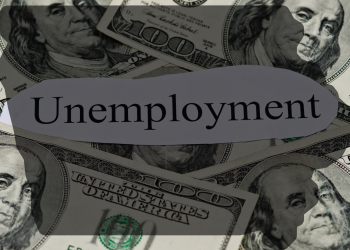DES MOINES, Iowa – Iowa’s seasonally adjusted unemployment rate dropped to 3.9 percent in October, down from 4.0 percent in September and 4.2 percent one year ago. The U.S. unemployment rate fell to 4.6 percent.
The number of unemployed Iowans decreased to 64,700 in October from 66,200 in September.
The total number of working Iowans increased to 1,596,200 in October. This figure is 1,600 higher than September and 34,800 higher than one year ago.
The labor force participation rate remained steady at 66.8 percent.
“In October, Iowa saw net employment growth for the fifth time in the last six months,” said Beth Townsend, Director of Iowa Workforce Development. “Our key challenge remains helping increase the number of applicants employers receive for each opening and getting people who have left the labor market during the pandemic back into the workforce. We are hopeful that our new Reemployment Case Management system will help address both of those issues and significantly reduce the amount of time someone is without a job.”

Seasonally Adjusted Nonfarm Employment
Iowa businesses added 1,000 jobs in October, lifting total nonfarm employment to 1,539,900 jobs. This increase marks the second consecutive gain following a drop in August, and the fifth job increase in the last six months. A total of 22,300 jobs have been added since April. Private industries expanded by 2,000 jobs and were fueled by trade. Conversely, government shed 1,000 jobs driven mostly by local government cutbacks – yet remains up 2,500 jobs versus last October. Overall, Iowa businesses are up 27,200 jobs beyond the level established one year ago, a gain of 1.8 percent.
Retail trade added the most jobs in October, gaining 1,500 jobs versus September. This gain is now the fifth consecutive for retail trade with 4,500 jobs added during that span. The largest gains were within food and beverage stores along with general merchandise retailers. Combined, the trade, transportation, and utilities supersector increased by 2,000 jobs compared to September. Education and health care services gained 700 jobs, fueled mostly by increased hiring in health care and social assistance, which has now added jobs in four consecutive months, gaining 2,500 jobs during that span. Prior to that, health care and social assistance pared jobs in each of the first six months of 2021. Manufacturing gained 400 jobs, fueled by durable goods factories hiring. Smaller gains this month included information (+300) and other services (+100). Jobs losses this month occurred in construction (-500), which has now lost jobs in three consecutive months and six of the last seven months. Professional and business services decreased by 500 jobs with losses being strongest in professional, scientific, and technical services, along with administrative support and waste management services. Finally, leisure and hospitality lost 500 jobs, as firms prepare for less business as winter weather approaches.
Over the past twelve months, leisure and hospitality has added the most jobs (+12,500). Despite the strong annual gains, this sector has trended down over the past three months, shedding 2,800 jobs. Smaller job gains included manufacturing (+7,600) and retail trade (+4,100). Annual job losses have been relatively light and limited to construction (-3,000); transportation, warehousing, and utilities (-1,100); and administration support and waste management (-1,100).















